Spend $1 million in less than 30 days to generate a minimum of $4 million in sales?!
That was the challenge given to our team at Common Thread Collective by PupSocks, a brand selling pet-themed socks that was currently spending only $500 per day on Facebook but wanted to make millions over the holiday season. We weren't sure we could pull it off — but, well, see what happened for yourself:
-
Over the course of 45 days, we sold 80,000 pairs of socks
-
We made a 4x return on ad spend on the first $1,000,000
-
We made a 3.8x return on ad spend on the full $1,500,000
-
The scaling program created more than 100 jobs in 3 states

I’m going to walk you through exactly how Common Thread Collective (CTC) built, managed, and scaled a campaign of this magnitude.
%(tableofcontents)
Step #1: Build Your Million Dollar Facebook Ad Campaign Foundation
If you want to maximize your potential ad spend on a newish Facebook ad account, there are four vital things to know.
-
Your ad account spending limit starts at $750 a day. This is not something that is initially obvious to most people, and getting it raised can be a pain — and getting it raised to $100,000 a day is generally laughed at. This is where having a Facebook rep is critical. Generally speaking, you will be assigned a rep when you reach a certain level of spend, but having an agency partner that has a permanent rep can expedite the process. Especially over the holidays, we recommend putting these requests in weeks ahead of when you plan to scale.

-
Create multiple accounts (we created five). This is a redundancy that protects against running into any ad spend issues on peak buying days. The last thing you want is to have ad delivery issues or suspended accounts when you’re planning on spending over $100,000 a day.
-
Ensure your credit limit is set high enough to support your rapidly scaling spend. In our case, we worked with PupSocks to prepay large amounts on their credit card ahead of time, since we couldn’t get the overall limit raised high enough. Don’t count on your ability to keep up with frequent payments on your credit card (to stay below the limit) while the campaign is going on, as you’ll get stuck waiting on payments to process on weekends and/or holidays.
-
Check that the website won’t break under the weight of all that traffic. If you’re on Shopify this should never be an issue, but for all other providers run some projected numbers on anticipated concurrent website sessions and load test your site using a tool like Load Impact.[*]
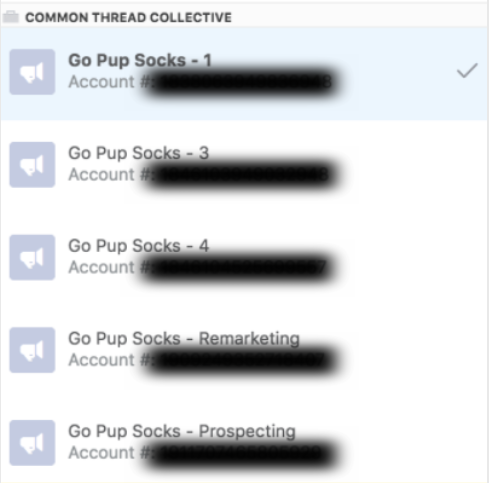
In the case of PupSocks, we had technical issues for scaling, as they store user-uploaded images that are up to 20MB in size on their server-side database. Luckily, PupSocks worked endlessly to ensure their site could support the traffic we sent.
Step #2: Find Your 4X ROI Ad Creative
If you’re going to rapidly scale on Facebook during the holidays, you’ll need massive reach at the top of the funnel in a very crowded and competitive buying environment. To achieve this, enter that landscape with a piece of creative you KNOW will drive massive engagement (shares = free impressions) and is already pre-loaded with validation.
Going live with BRAND NEW creative on peak buying days like Black Friday and Cyber Monday is one of the biggest mistakes we see people make. You want to use your absolute best piece of prospecting creative to drive the cheapest possible clicks and allow your site to communicate the sale.
When we went live on Black Friday with the ad below, it was already loaded with 50,000 likes, comments, and shares. We did this by:
-
Creating 10-12 different organic posts
-
Boosting them with a small budget ($50ish) to PupSocks’ Facebook fan page audience for the two weeks leading up to the push.
-
Determining which received the most combined likes, comments, and shares.
-
Set up a PPE (pay per engagement) campaign for the winning ad creative to a broad audience (i.e. 10% lookalike audience) at $100/day for seven days.
We only ran the PPE campaign for seven days before going into aggressive scaling, because it generated engagement so incredibly quickly.
When you run your PPE campaign there isn’t a minimum level of likes, comments and shares you need, or some other magic number for finding a winning ad. It’s about allocating a testing budget you can afford, and finding your best ad relative to all the ones you are testing.
Pictured below is the winning ad creative for our PupSocks campaign that received engagement for a fraction of a penny.
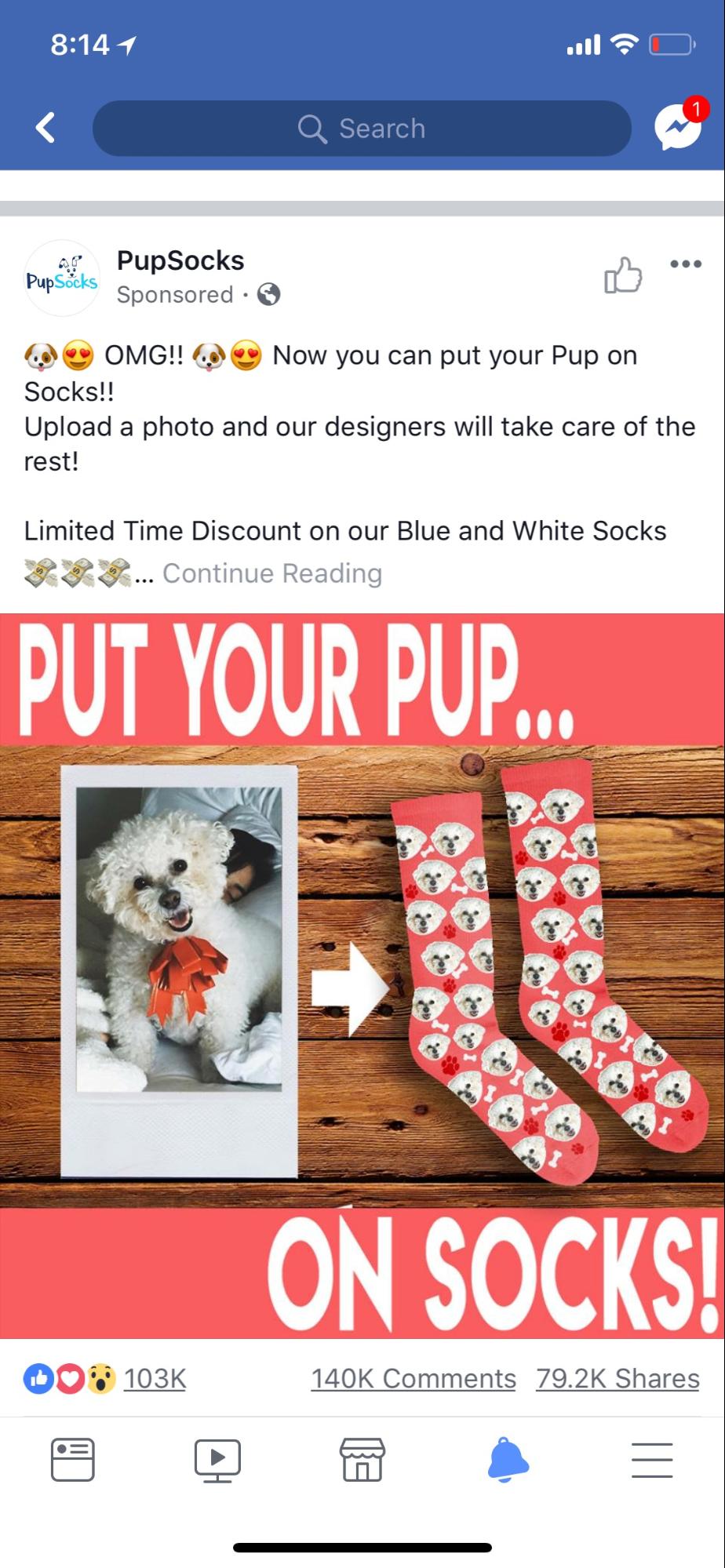
Dropping this ad into auctions against terribly boring “20% Off Sitewide” text ads is like bringing a gun to a knife fight.
In total, this ONE ad was able to account for more than 25% of the total ad spend ($286,767) and almost 30% of the revenue ($1,184,343). 
Spending budget on a few engagement-objective campaigns to find a high-performing piece of ad creative ahead of peak buying days can give you a massive advantage.
While you may not hit 50,000 likes, comments and shares on your winning ad creative (puppies are pretty viral) you should still have a solid level of validation for your ad that will help drive high relevance scores, broader reach and lower frequencies.
Step #3: Create New Audiences For Your 4X ROI Ad Creative
Now you’ve found one piece of ad creative and loaded it with a ton of likes, comments, and shares, who should you target when trying to scale? The answer is everyone. Or at least anyone you have reason to believe might be interested.
Start with what you know:
-
Lookalikes based on all stages of your funnel), then move to
-
Prime interests (pet owners, fans of pet brands, etc.), then
-
Get wacky (Kardashian interest anyone?)
We’ll even break out all these audiences into separate placements and slice them by gender to try to isolate every possible opportunity. The key to scaling is always, always agility. By that, I mean the ability to create options for yourself. The more ad sets you can come up with at the start, the higher the likelihood of finding something that works. In the beginning, you want to have as many ad sets as your little fingers will allow you to create.
For PupSocks we created a total of 828 ad sets during the two-month push.
-
50+ were lookalike audiences (1-10% lookalike audiences on a variety of funnel behavior)
-
200+ were custom audiences
-
500+ were variations of our lookalike and custom audience ad sets broken out by placements, bid type etc.

Start with reasonable daily budgets (I recommend three times your average order value) on each ad set, then be prepared to kill off underperforming ad sets quickly!
But give yourself options. Trying to predict the right audience and applying a massive budget to it is a fool’s errand, unless you have loads of historical data.
This is especially true on peak buying days when consumer purchase intent is sky-high. Having loads of ad sets will give you lots of flexibility in where and how you scale.
P.S. Make sure to include a few super-broad audiences — even try a default “all” audience.
Step #4: Decide When To Kill Or Scale Your Ad Sets
In poker, great players say that there are only two decisions you need to know how to make in order to win: when to raise, and when to fold. The same is true of Facebook ad buying. Your job as a media buyer trying to rapidly scale is to determine what information you need to decide to kill or raise an ad set, and how fast can you get that data. This starts by deeply understanding your unit economics to set a target Return on Ad Spend (ROAS), then correlating leading indicators against that ROAS.
We’ve found that the safest top-of-funnel leading indicator for ROAS is Cost Per Add-To-Cart (CPATC). When you go live with all your ad sets, you’ll want to track this metric for every single one.
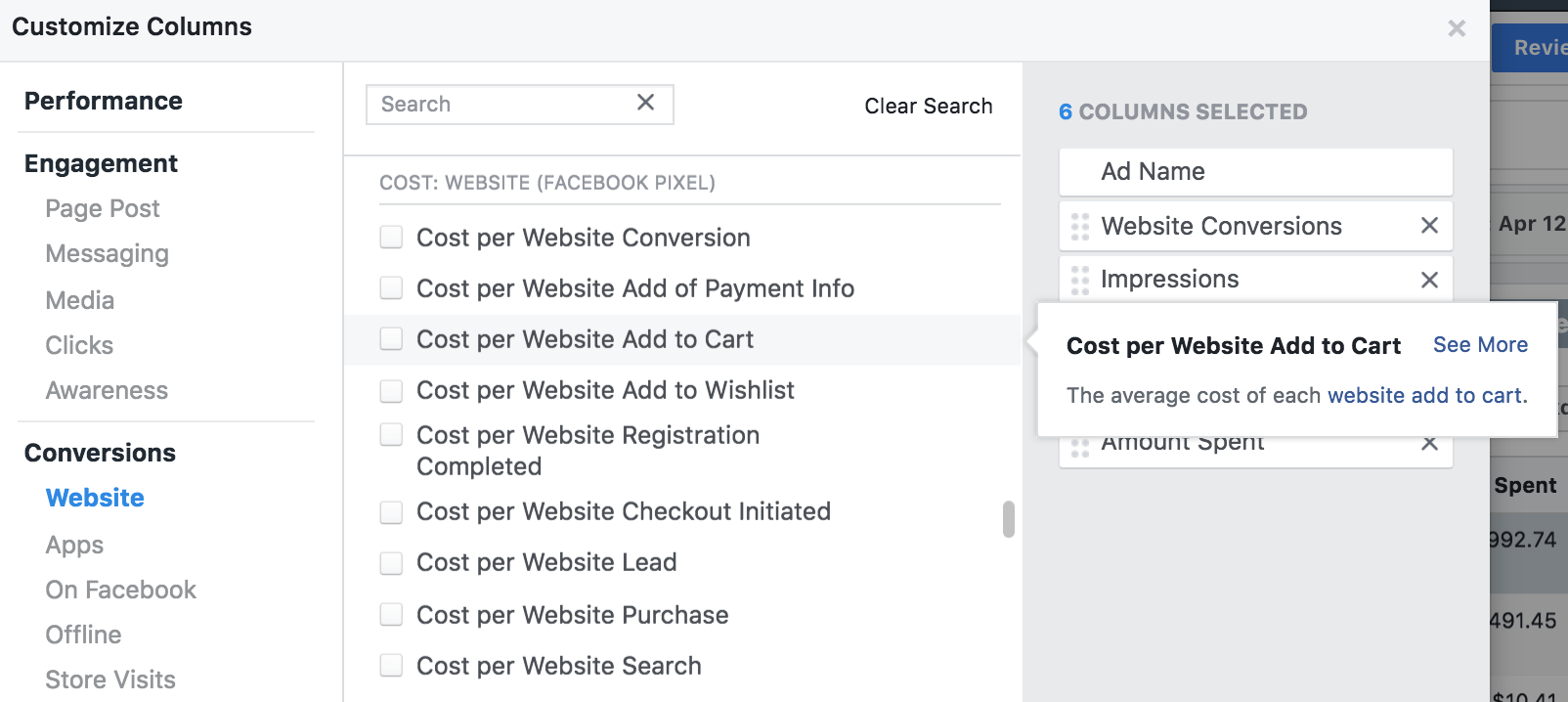
As soon as we got 4-5 add-to-carts, we made a call on whether to kill or scale an ad set. If it was too close (within 10% of our target CPATC on either side) to call we would wait to see the ROAS on actual purchases. Don’t worry too much about statistical significance early on — it’s OK if leading indicators aren’t 100% accurate every time. If you’ve created enough ad sets, this should help you hone in on the winning ad sets pretty quickly.
As you continue spending, make sure you’re charting your delayed attribution (delayed attribution refers to purchases that happen outside the single day click/view window). For example, if someone clicks on an ad on day 1 of your campaign and then comes back to make a purchase on day 7, this purchase will show up in Facebook attributed to the ad set/ad on day 1.
Facebook’s full default attribution window is a 1-day view / 28-day click window. That means that your ROAS will continue to increase throughout the entire 28-day window as purchases continue to happen. Because PupSocks wanted a ROAS target of 4x on a full attribution window, we needed to understand how much the ROAS would increase (or CPA decrease) over the growing window.
Knowing this data, we could make better decisions on day one. In order to do this, you need to export your Facebook ad data every day into the spreadsheet below.
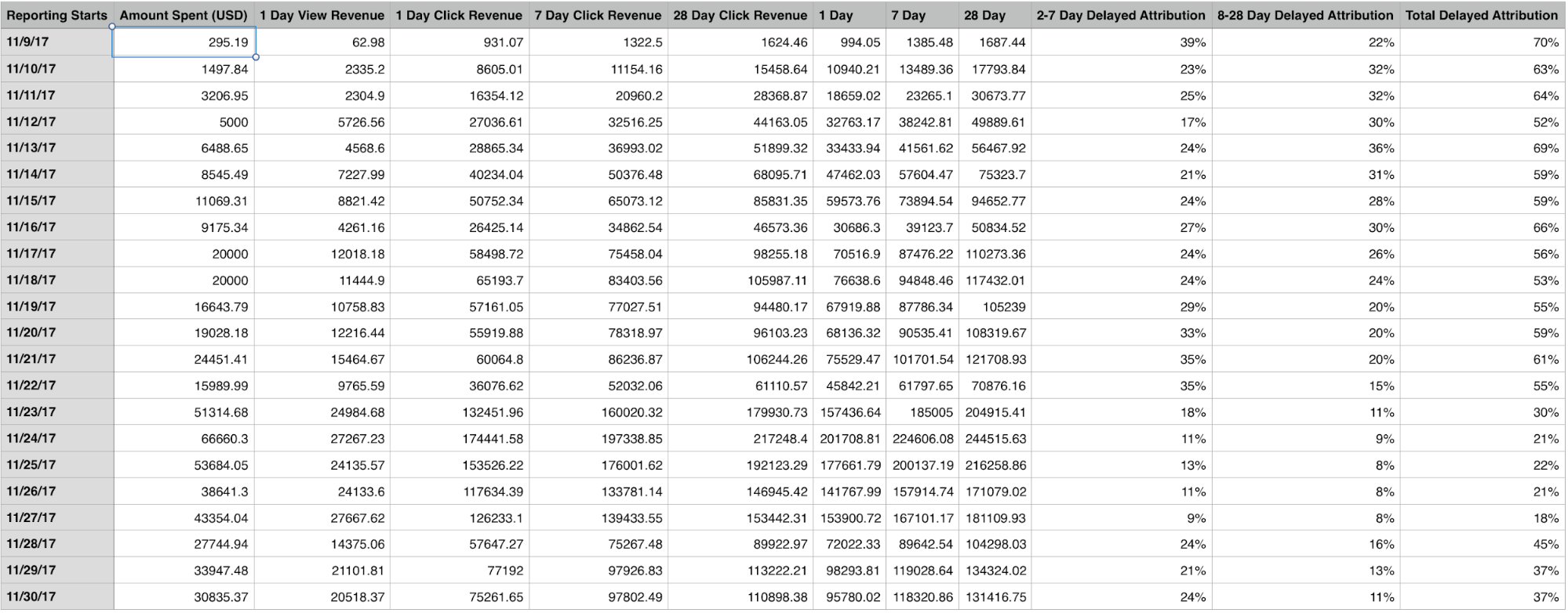
You can click on File > Make a copy… to use our spreadsheet.
Delayed Attribution Tracking Spreadsheet
The key here is to track your 1-, 7- and 28-day click revenue and then create a basic calculation that allows you to track the percentage increase between each time period.
Once you get a sense of your total delayed attribution, you can be more aggressive on what your scale target becomes. For example, if you begin with a target of a $20 CPATC by tracking your delayed attribution and finding that your CPATC will decrease by 30% in a 7 day window, you’ll realize that you can make a decision to scale at a $26 CPATC (30% higher) on day 1 based on how that number comes down over time.
If your head is spinning from all the math, that’s what ecommerce media buying agencies like Common Thread Collective specialize in. If you want help scaling a 4X ROI campaign like we did with PupSocks, contact us here.
Step #5: Duplicate Your Winning Ad Sets And Increase Your Budget
Once you begin to see winning ad sets emerging, it’s time to start milking those audiences for everything they’re worth! While we recommended starting with tons of ad sets and killing them based on leading indicators, we would recommend allowing yourself to see those ad sets reach your target ROAS with a meaningful number of purchases (minimum 4-5) before deciding to scale the ad set.
But once you do, it’s go time. In a traditional buying scenario, where you’re trying to accomplish normal growth over time, you may simply decide to increase a winning ad set budget 10-20% per day. When you are trying to 200x ad spend in 30 days, ain’t nobody got time for that (and we don’t recommend you simply 200x your ad set budget because placing all of your eggs in one basket is a recipe for scale stall outs).
So the second we have a winning ad set, we immediately duplicate the ad set with a higher budget (sometimes 3 or 4 times depending on the size of the audience) using the same auto bid strategy (auto bidding is the default bidding strategy in conversion campaigns). Then we duplicate that winning ad set again 3-5 more times with different manual bids (the green underlined number below is the manual bid target for the ad set).

We use a spread of manual bid targets because each bid type is going to create different auction dynamics, and if you have a strong piece of ad creative, you’ll even be able to overbid your CPA target, win more auctions and still hit your ROAS! This strategy will allow you to get the absolute most out of every single winning audience/ad set combination.
Step #6: Get Advertiser Access To An Influencer’s Facebook Page
Once you are off and scaling from your own ad accounts and have a strong sense of the best-performing ad creative, it’s time to figure out where you can get additional distribution for that ad creative. At CTC, we like to say that the two greatest influences on purchase decisions are:
-
Price
-
A recommendation from somebody you trust
So ask yourself, who does your potential customer trust? Often, this is where we apply influencer marketing tactics, partnering with influencers by getting advertiser access to their Facebook page to run paid programs. In the case of PupSocks, we had the perfect partner for a program like this: iHeartDogs.
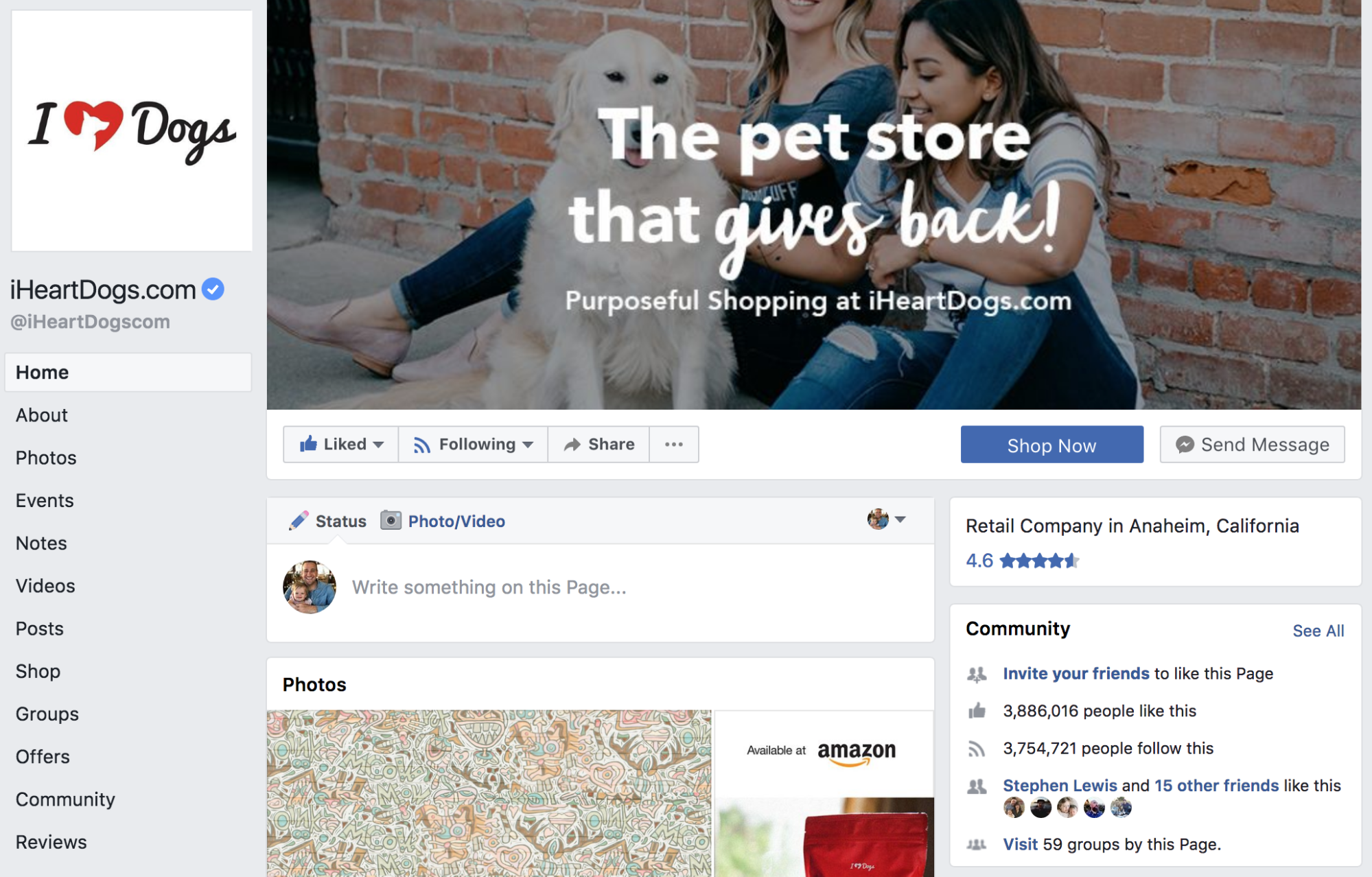
iHeartDogs is a brand with almost 4 million likes on Facebook and a reputation for giving back to the dog community. They have a massive following of dog lovers, and they were the perfect partner for a paid program.
To find iHeartDogs as a partner, it didn’t hurt that their founder is a close friend and advisor to CTC, but finding people like this isn’t that difficult. A few hours of searching on Instagram (use hashtags) will reveal a ton of accounts in your space with large followings. Send a few direct messages telling people you want to work out a sponsorship and you should hear back quickly!
Here’s the ad creative we ran on iHeartDogs Facebook account. You will see that we gave them the same winning ad creative we already knew would work from the PupSocks campaign, and then allowed them to create ad copy that they felt would feel organic and native to their community.
Ad #1:
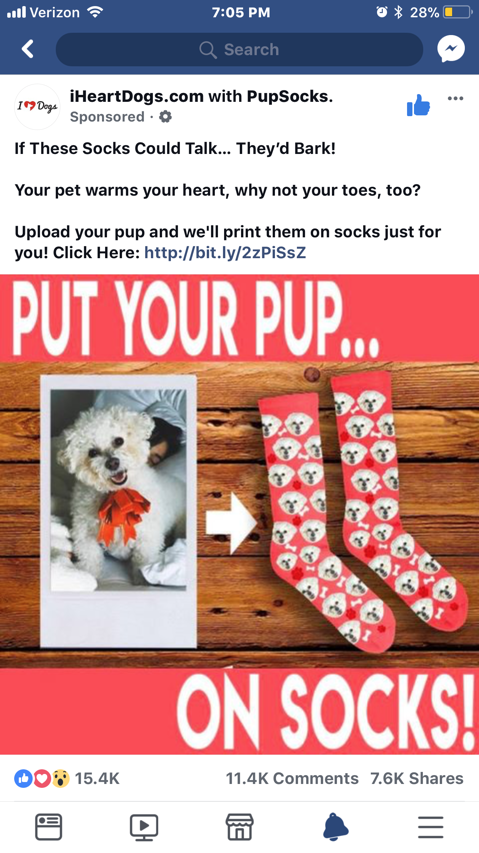
Ad #2:
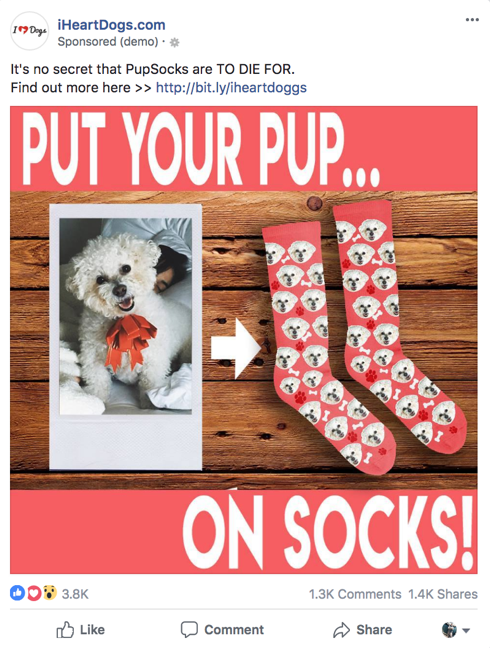
We took these two ads, plus three other ads, and ran conversion campaigns through the iHeartDogs page targeted at the following audiences:
-
iHeartDogs Facebook page engagers
-
iHeartDogs Instagram page engagers
-
iHeartDogs website visitors
-
Our core audiences
The result was 88,000 new website visitors, 3,184 new customers, and $136,316 new revenue.

By creating additional channels of advertising and distribution like this, and trading on the credibility of an “influential” brand in the space, we were able to scale up our ad campaigns and create a win for both sides.
Note: The deal structure that we arranged with iHeartDogs was a fixed-pricing package based on an expected cost per thousand of impressions (CPM). In other words, we were paying for guaranteed audience access we were receiving. The deal included emails to their database, advertorial content creation for placement on their site, multiple organic social posts, and advertiser access for 30 days. We always prefer to work on a fixed-fee when possible because it allows us to create more margin as we scale versus a variable cost that creates a fixed margin.
3 Key Takeaways To Scale Your Next Facebook Ad Campaign
Here are the three key takeaways we hope you get from our experience:
-
Plan Ahead. Scaling like this won’t happen without planning. Making sure you have your financial, technical, and creative ducks in a row is a must.
-
Start Broad, Narrow Down, Then Multiply. Give yourself as many potential winning ad/audience combinations as possible to start. Kill losers quickly to protect your budget, then duplicate and manual bid your winners.
-
Influence The Outcome. Finding additional pages/people that you can run your proven ad campaigns through is a powerful way to both validate your brand and create additional scale on social platforms.
If you made it this far, you have the right kind of obsession to be great at this process, and you deserve a reward. So, for a 20% discount on a pair of PupSocks, use code SUMO.
The following people deserve a massive shoutout for their work on this campaign: Nick Shackelford (Strategist), Vincent Wu (Buyer), Caitlin Thomason (Account Manager), Adriana Falcon (Designer) and Alex Maldonado (Copywriter). And of course none of this would have been remotely possible without the insane effort of Zach and his entire PupSocks team. The entrepreneurs who create these amazing brands are always the real heroes, and we’ll only ever be as good as the products themselves.
Add A Comment
VIEW THE COMMENTS